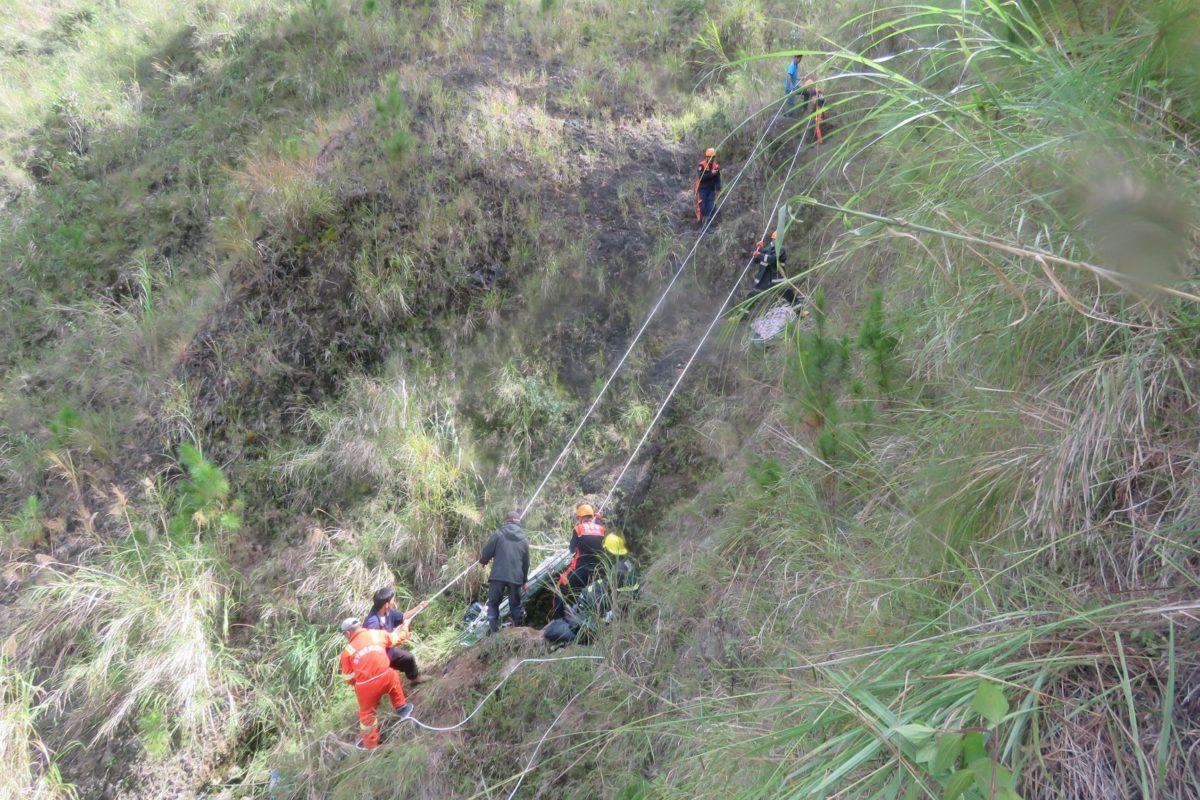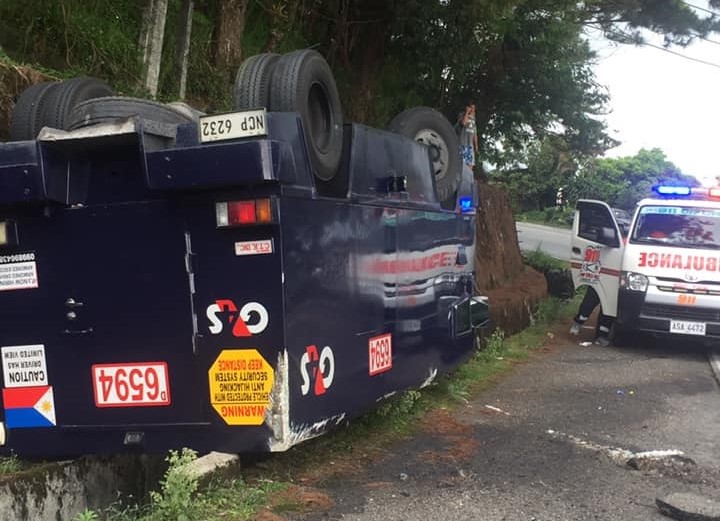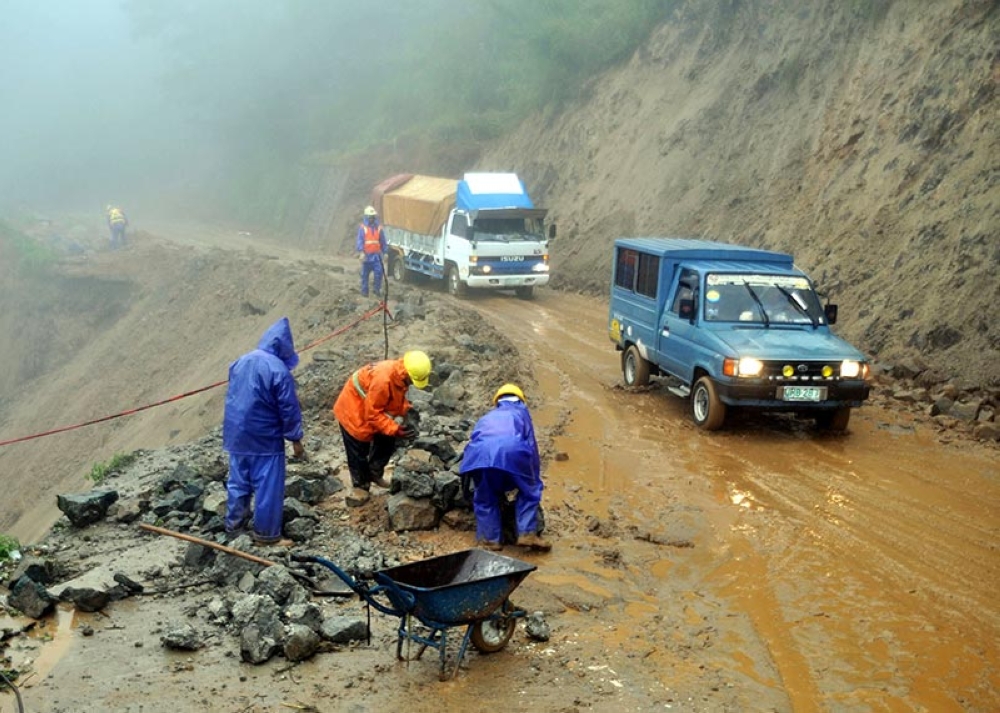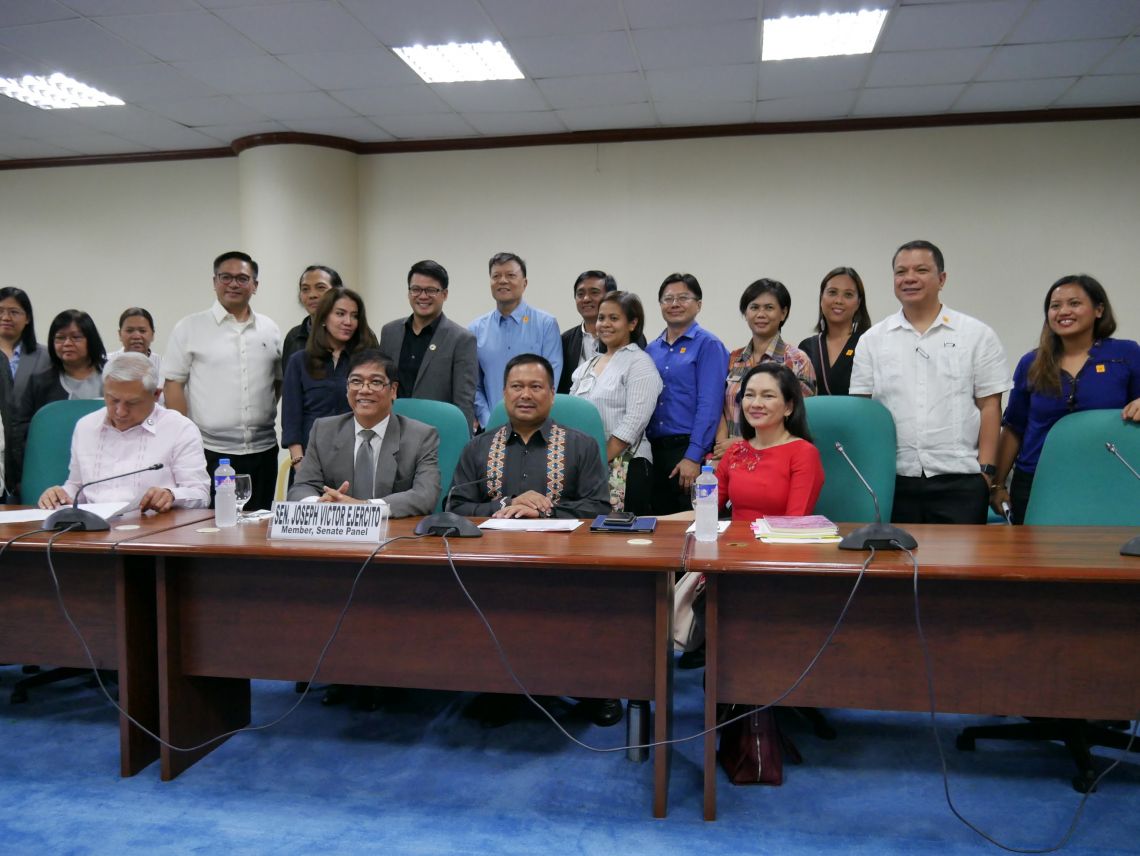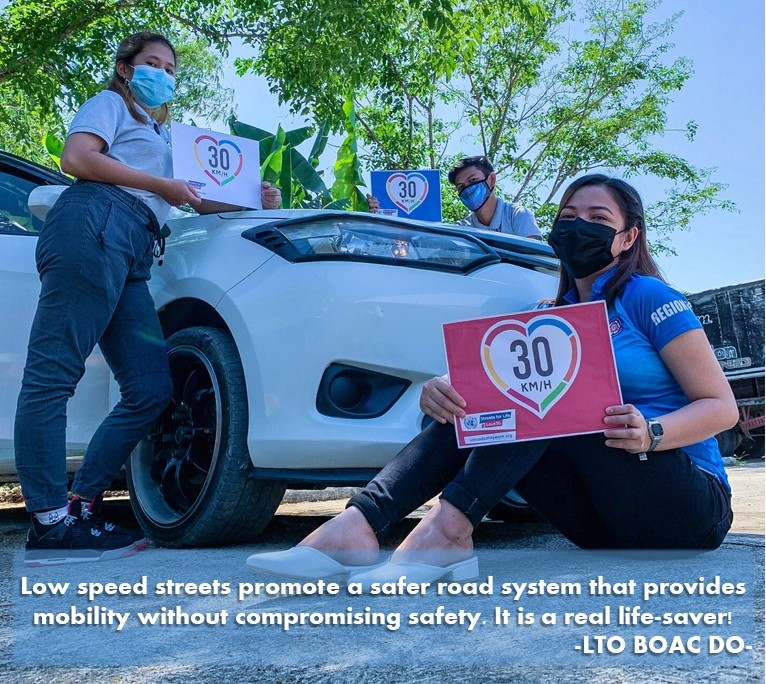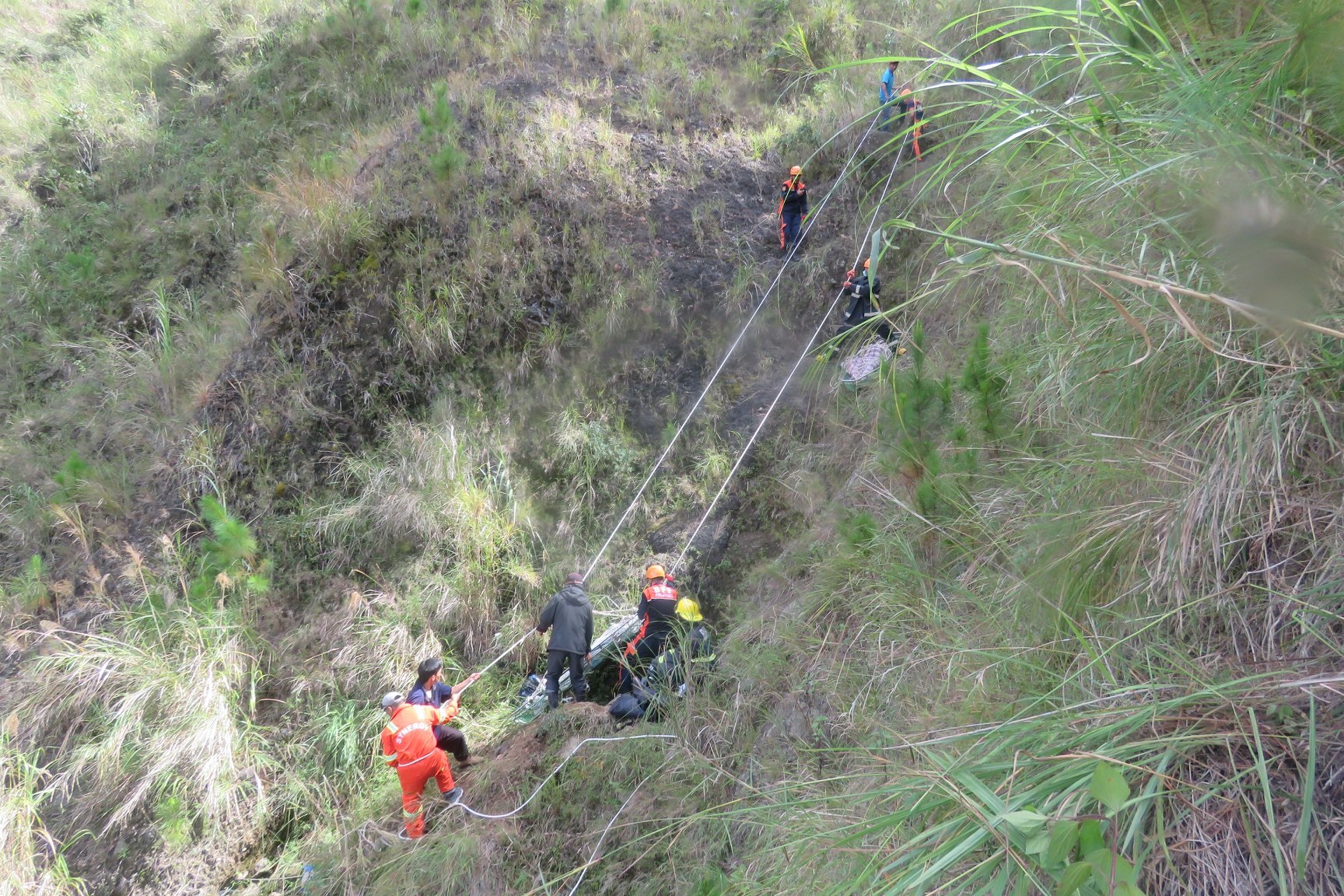
The frequency of vehicles falling into ravines along Benguet’s rugged mountain roads has alarmed officials and forced them to take action while law enforcers asked the public to observe road discipline to help ensure safety.
Provincial officials passed on Nov. 11 a resolution requesting the Department of Public Works and Highways (DPWH) to implement engineering measures along crash-prone highways and road networks in Benguet to prevent or minimize road crashes.
Resolution No. 2019-220 asks the DPWH to “urgently install mitigating measures” such as road signs, road reflectors, road safety buds along the Benguet-Nueva Vizcaya Road, Buguias-Kabayan Road, now called Andres Cosalan Road, and other road networks in the province.
“The economic growth of the nearby communities of the province of Benguet is dependent upon the development of the highways that enhance the mobility of its various essential economic factors and the installation of mitigating measures are drastically needed,” the resolution said.
Crashes are not uncommon on Benguet’s rough roads but a particular incident last Oct. 27 drove home the point that engineering solutions are necessary to ensure safe roads: a vehicle carrying four people, two of them minors, fell off a curve and into a ravine along the Buguias-Kabayan Road.
Three people, including the driver, were crushed to death inside the vehicle in that incident, one of the many that could have been averted if there were barriers lining the roads.
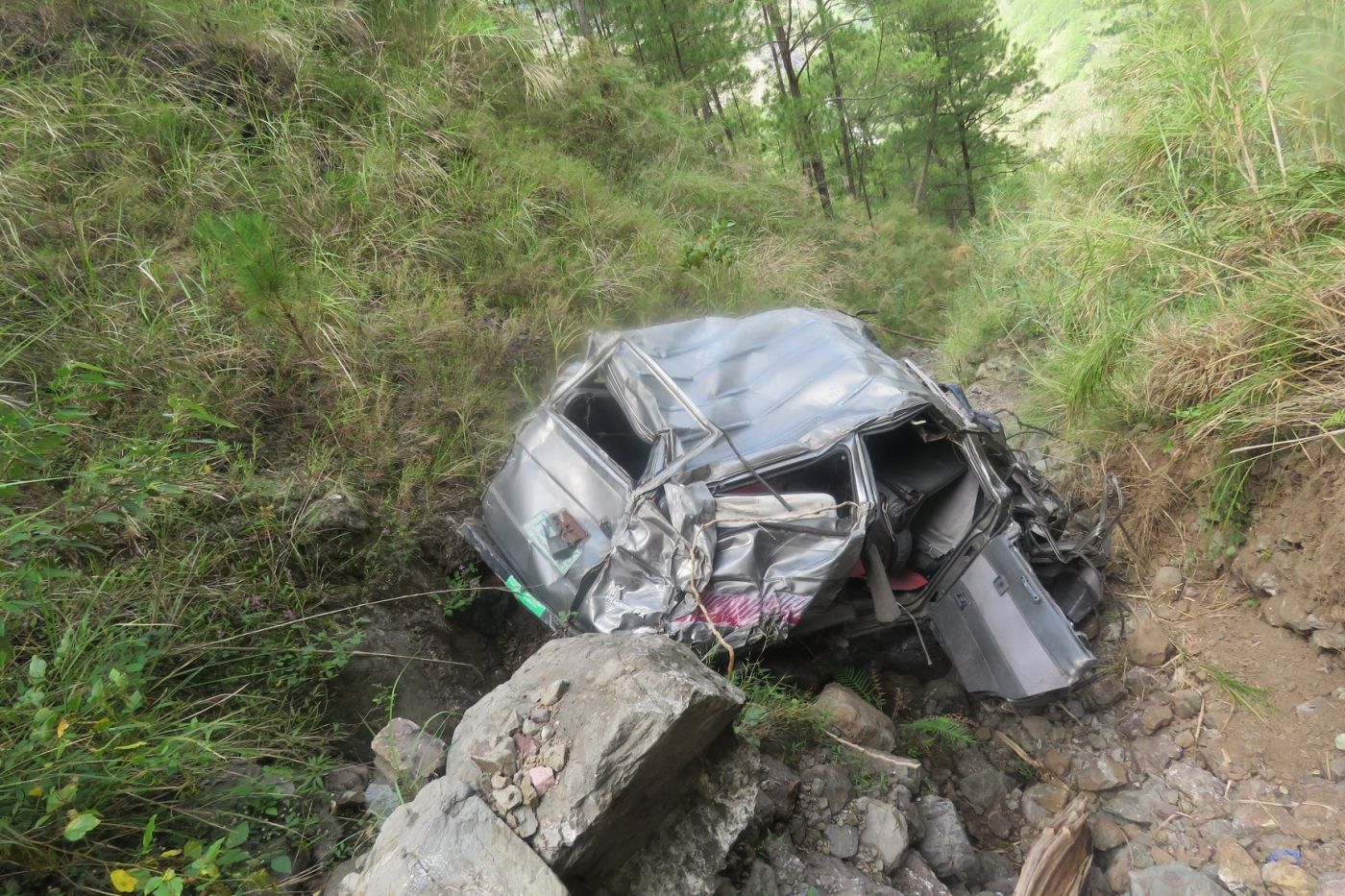
“What happened in Kabayan has prompted me to ask DPWH to put in place engineering measures,” Board Member Nestor Fongwan Jr., author of the resolution, said. The Buguias-Kabayan Road, for one, lacks road barriers, he explained, adding that apart from improving the road surface around that area, barriers should also be put in place.
Driver discipline
Apart from engineering solutions, public awareness of road rules and driver discipline are equally important to ensure road safety, Benguet Provincial Police Office Director Col. Elmer Ragay said.
“I could only cull from statistics, and when we look at the vehicular traffic incidents, 85 to 90 percent of what happen in the Cordillera are attributed to Cordillera drivers, so we are largely to blame,” he said.
He suggested that local government units put up signage along areas prone to crashes to caution motorists since not all of them are familiar with the road conditions in the region.
“Driving in Manila is very different from driving here in the region,” Col. Ragay said, adding that crashes occur almost every day. If not collisions, they are incidents caused by the drivers like running into posts, he explained.
The Benguet Provincial Police Office recorded a total of 9,383 road crash incidents from 2014 to August 2019, causing death to 133 people and injuries to 2,935 people. Some 6,300 incidents were listed as cases of reckless imprudence resulting in damage to property.
In 2019 alone (Jan to Aug), there have been 944 road traffic crashes, resulting in 13 deaths and 299 injuries recorded in Benguet, as against 1434 crashes in the province for the whole of 2018.
Referring to the Oct 27 incident in Kabayan, Lieutenant Gilbert Anselmo, Kabayan Municipal Police Station (KMPS) officer-in-charge, said the driver allegedly fell asleep and lost control of the steering wheel, causing the vehicle to fall into an 800-meter deep ravine at the Bokod-Kabayan national road in Adaoay.
The lone survivor was found by police on the road days after the incident in a state of shock. News reports said he later led the police to the crash site where the vehicle, a Tamaraw FX, and the bodies of his dead cousins were found.
Anselmo cited the absence of concrete barriers and signage along the stretch of the crash-prone road that could have prevented the vehicle from falling off the road in Benguet’s Kabayan town.
Benguet is in the southern tip of the Cordillera, has mostly mountain roads and is home to the highest mountain in Luzon, Mt. Pulag, also in Kabayan.
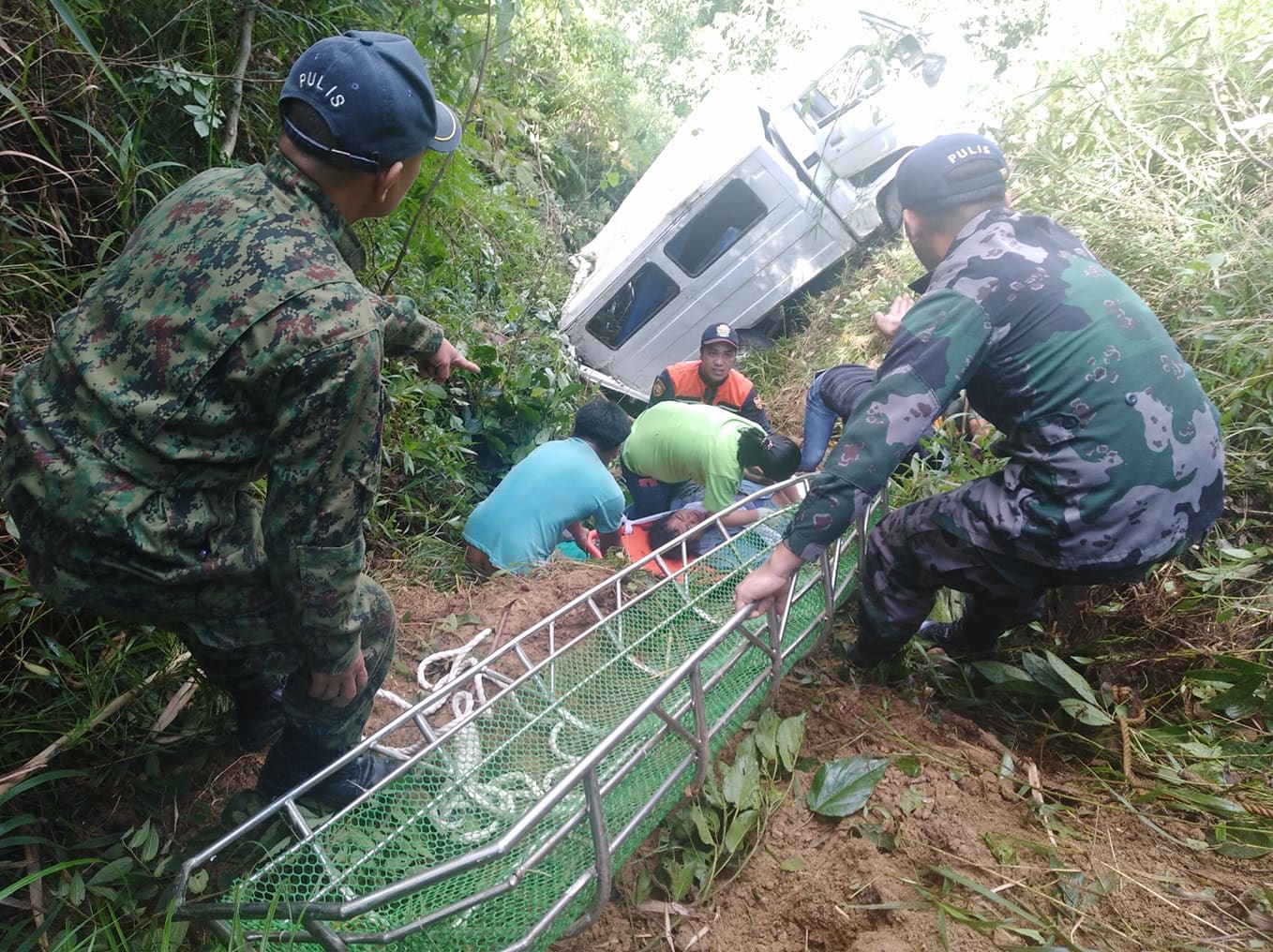
On Nov 12, just a day after the resolution was passed, six people, including a six-year-old boy, survived a similar crash in another part of Benguet. A van they were riding swerved off the road and fell 50 meters down into a ravine. The occupants of the vehicle suffered bruises.
They were traversing Gov. Bado Dangwa National Road at Sitio Tigil, Sagpat in Kibungan, Benguet.
Human error
Kibungan Police Chief Lieutenant Douglas Akistoy Jr. said the vehicle was on its way to Baguio City when the driver allegedly miscalculated a curve on the road, causing the vehicle to fall.
There were no road barriers along that portion of the national highway, he said.
The police in both Kibungan and Kabayan acknowledge that the driver’s alertness is as important as road signs and barriers, citing the oft-repeated reason for a crash – human error.
Sleepiness is a contributing factor to human error in driving, but Col. Ragay, Benguet’s police director, said “most of the accidents are caused by drivers who are intoxicated.”
“What we need more is public awareness and everybody’s participation to ensure road safety,” he stated. “On the law enforcement side, the best thing we can do is to provide police presence during rush hours, especially in accident prone areas but we cannot sustain it on a 24/7 basis that is why we need the help of other stakeholders,” he added.
Baguio Traffic Management Unit chief Oliver Panabang said apart from drunk driving and speeding, the driver’s lack of training is another major contributor to errors that result in injury or death.
“The cause of crashes in the city is mainly human error. The drivers lack training and discipline,” he said.
Of the total of 9,383 road crash incidents from 2014 to August 2019, human error was cited as cause for 90 per cent or 8,360 cases, followed by mechanical defect with 673 and 350 incidents citing poor road conditions.
Vehicles falling into ravines
Recent incidents of vehicles falling into ravines in Benguet:
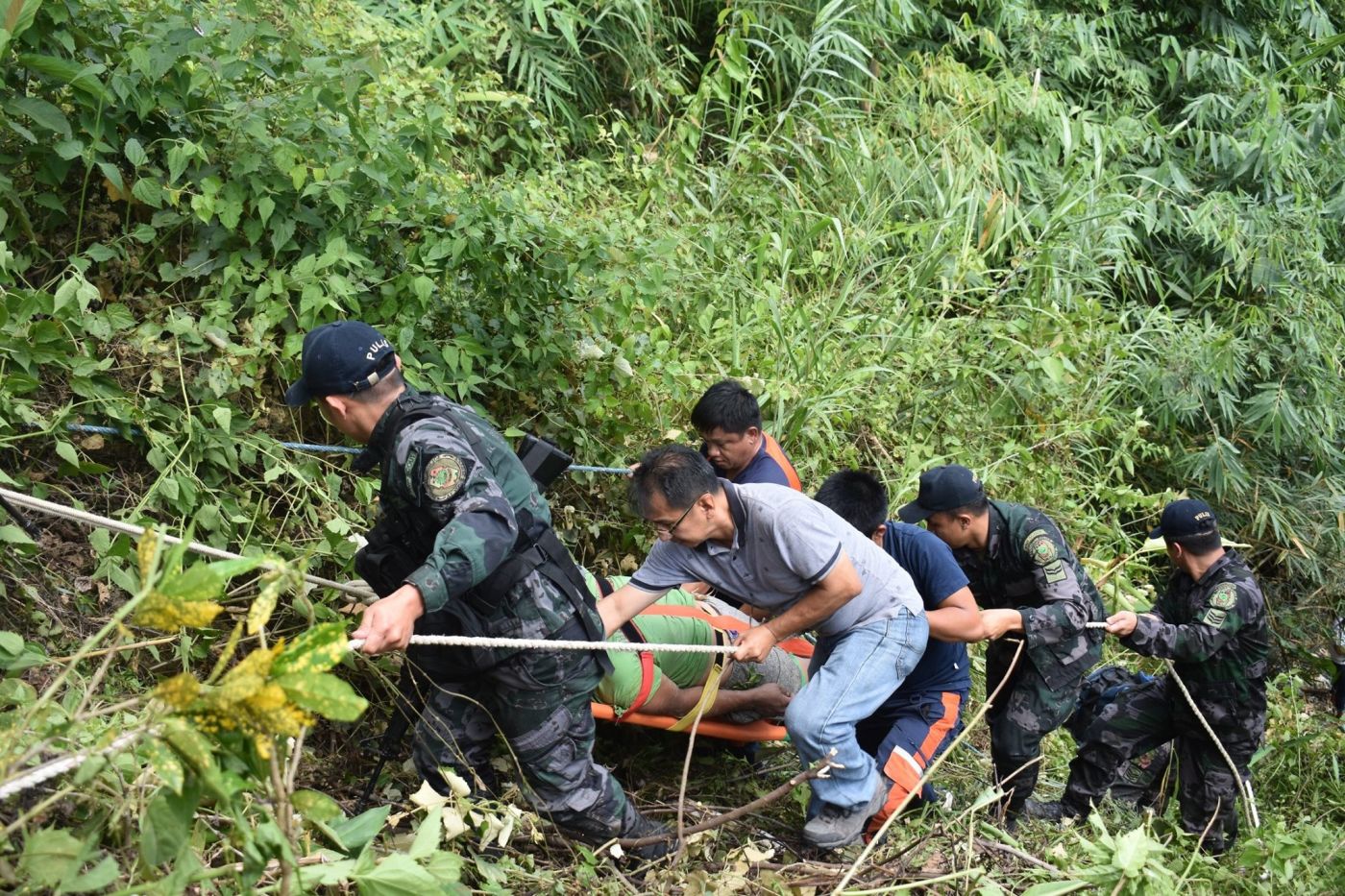
September 23: An SUV fell into a 60-meter ravine in Itogon, injuring the driver and passenger. According to witnesses, the vehicle failed to properly negotiate a curve on the road.
September 3: Three farmers cheated death but sustained multiple injuries after their vehicle fell into a 100-meter deep ravine along Halsema Highway. The vehicle’s electrical system was reported to have malfunctioned, causing the headlights to switch off and dimming the road ahead.
July 31: A Filipino was killed while five Chinese nationals he was driving were injured after their vehicle fell into a 400-meter ravine in Bokod town. The group had just come from a hiking trip at Mt Pulag in Kabayan when the SUV they were riding miscalculated a sharp curve, an investigation showed.
May 1: Responders rescued and rushed a lone victim who sustained injuries when his elf truck fell into a ravine at Abuloy, Bayabas in Sablan. Police said the driver of the truck lost control of the vehicle while traversing a sharp curve along a junction.
In another major road crash also in the Cordillera region about a month ago, overloading was cited as reason for the tragic incident that killed many farmers.
In Apayao province, in the northern tip of the region, 19 people died, many of them elderly farmers, and 21 others injured when an overloaded truck carrying them fell off the road in Conner town. Three survived.
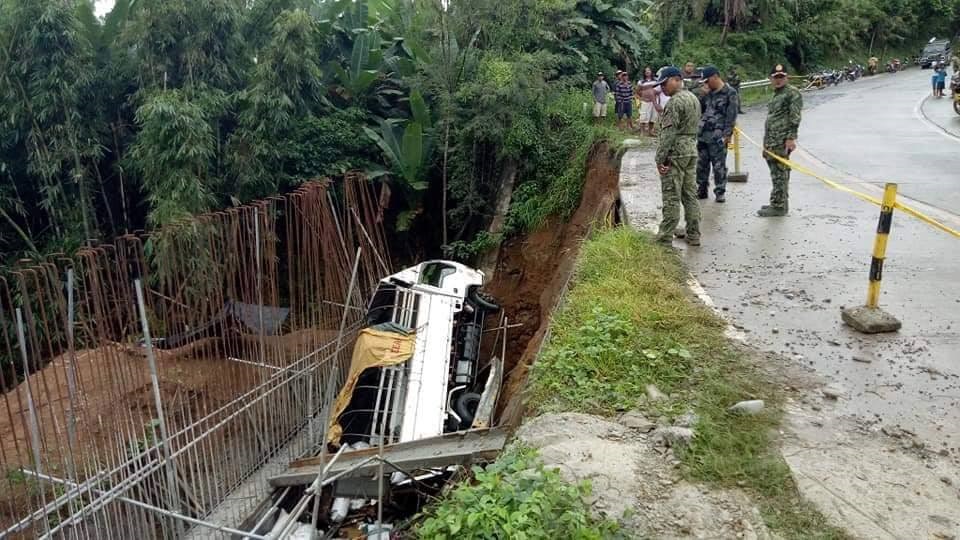
The truck, which was also loaded with sacks of seeds, was driving up an incline when the driver lost control of the vehicle, and the weight it was carrying forced it to one side and into a shallow ravine, police said.
The passengers were returning home from a nearby province to get their supplies of palay and corn seeds from the government when the tragedy struck.
Following the incident, the Land Transportation Office (LTO) in Cordillera said it would intensify its campaign against overloaded vehicles.
Crashes are preventable
LTO Cordillera Region Director Francis Almora has this reminder for motorists: Crashes are preventable. Human errors committed on the road should not result in deaths and injuries.
“A road accident is something that we cannot prevent. But it would appear from statistics that the common cause of road crashes is human error which is not an act of God, therefore it is not an accident, it is done by humans which is why we now call it road crash because it can be prevented, although we will accept that humans will always commit an error,” he said on Nov 17, in observance of the World Day of Remembrance for Road Traffic Victims which is commemorated every third Sunday of November.
“We always hear people say it was an accident, but actually it’s not because it could have been prevented if motorists were more aware of the contributing factors like road rules, their vehicle and themselves,” Almora said.
The Philippines has adopted a five-year Road Safety Action Plan that aims to reduce road traffic fatalities by 20 per cent in 2022 and towards a vision of zero deaths on the road.
In 2016, close to 11,300 Filipinos died due to road crashes, representing a 64 per cent increase from 6,869 deaths in 2006, according to the Philippine Statistics Authority.
This story, first published by SunStar Baguio, was produced under the Road Safety Journalism Fellowship carried out by Vera Files and the World Health Organization under the Bloomberg Initiative for Global Road Safety.
